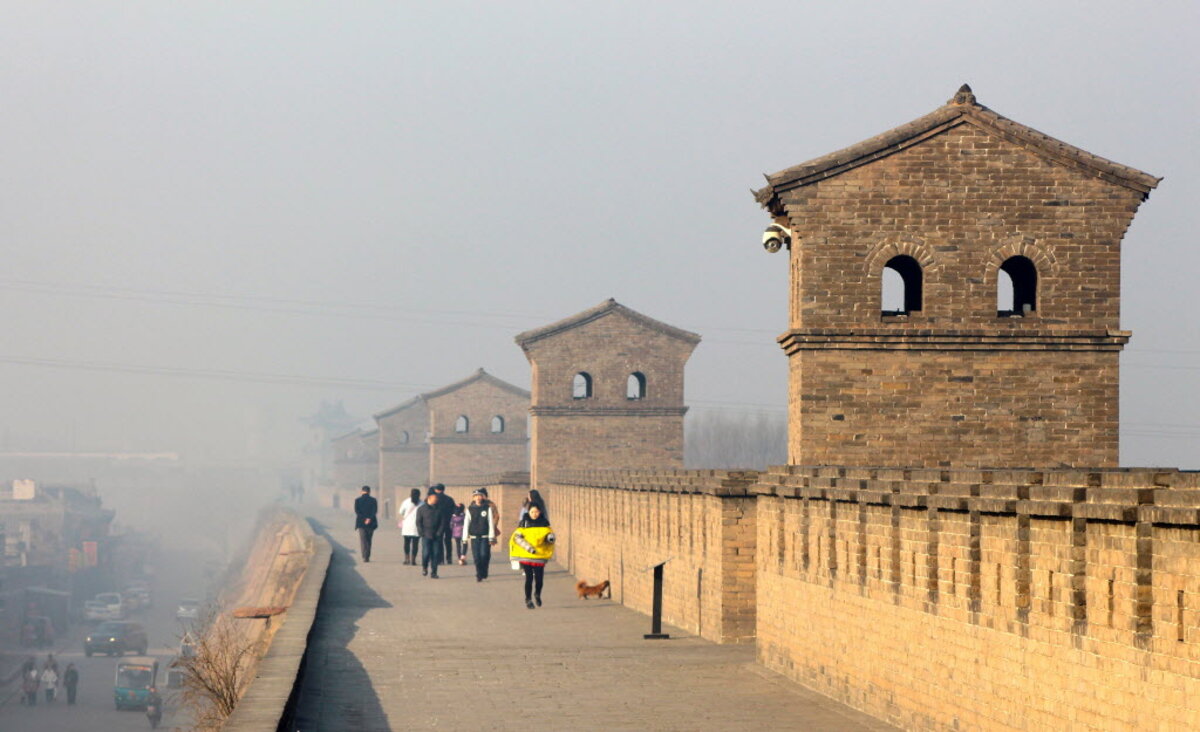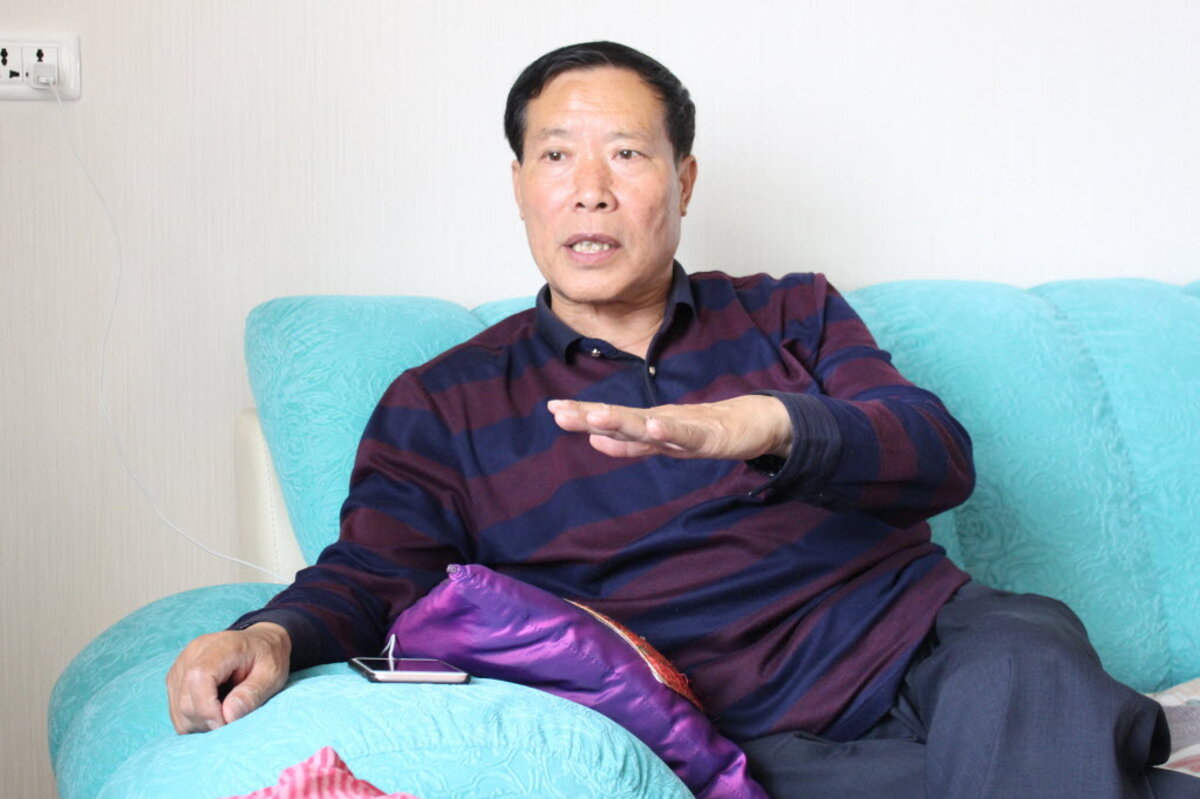How an ancient Chinese town survived the tumultuous Cultural Revolution
Loading...
| Pingyao, China
Every day, hordes of Chinese and foreign visitors crowd into this medieval county seat, which Lonely Planet calls “China’s best-preserved ancient walled town.”
They stroll down lantern-festooned lanes, admire Ming Dynasty architecture and climb the steps to town walls that date back 640 years. And many leave with a question: How did this UNESCO World Heritage site manage to survive China’s tumultuous history, including the orgy of violence half a century ago that was the Cultural Revolution?
Mao Zedong launched the Great Proletarian Cultural Revolution in May 1966, ushering in a chaotic era that spelled catastrophe for China’s antiquities. Driven by Mao’s edict to attack the “four olds,” gangs of Red Guards smashed up temples, destroyed artwork, and demolished libraries and cemeteries.
The Communist Party cheered on the destruction, with the People’s Daily publishing a June 1 editorial exhorting cadres to “sweep away all monsters and demons!”
Yet somehow Pingyao avoided the carnage. Or did it?
In recent years, first-hand accounts have shed some light on this period in Pingyao, a town in Shanxi province that flourished as China’s banking center in the 1800s. The Cultural Revolution triggered a decade of factional warfare, and the story starts with Suo Fenqi, who in 1966 was an 18-year-old local leader of the Red Guards, the revolution’s shock troops.
Fit and handsome, Mr. Suo was born into a farm family that sang songs praising Chairman Mao. His parents had both joined the Communist Party years before the 1949 founding of the People’s Republic of China.
“I had a good red family background,” Suo says during a recent interview in his apartment near Pingyao. “That’s why I was picked to be a Red Guard leader.”
Pingyao at that time was a dusty and isolated place, 440 miles southwest of Beijing. Its ancient architecture and courtyard homes were still intact, but its neighborhoods were in transition. One of Suo’s duties was to go door-to-door with other Red Guards, seizing hidden gold and other booty, and driving intellectuals and the wealthy from their homes.
As a Red Guard, Suo also led raids on temples and other cultural treasures throughout the walled city. “Chairman Mao called for us to ‘Destroy the Four Olds’… and whatever Chairman Mao said, we did it right away,” he recalls.
Mao cheered on the Red Guards in hopes they would quash potential rivals and re-energize socialism. But the unleashed mobs got out of control. As in many other parts of China, rival groups of Red Guards were soon clashing across Shanxi.
In and around Pingyao, there were two Red Guard factions: one loosely allied with the military, another allied with Chen Yongui, the Communist party secretary from nearby Dazhai. Mr. Chen was a close ally of Mao, but in 1967 he was being hounded by his rivals. He set up his headquarters in Pingyao’s Chenghuang Temple, which dates back to the Northern Song Dynasty of the 1200s. Suo joined him there.
Chen’s faction was badly outgunned by its adversaries, according to Suo, and soon faced a choice: fight or flee. Some advocated retreating to Xian, an ancient city to the South. Suo says he argued for staying and defending Pingyao by fortifying the walls. His argument won the day.
Even before the Cultural Revolution, Pingyao’s 39-foot-high walls – topped by six dozen watch towers – had fallen into disrepair. At night, peasant farmers would burrow into the walls, hauling away bricks for their houses and pig pens. Suo organized 300 of his men to take back the pilfered building materials and repair the walls. Another 300 people were charged with guarding them and watching out for attacks, he says.
By early 1969 the two factions, armed with rifles, machine guns, mortars and other weaponry, were girding for a bloody assault. “Personally I did not want to fight, but I had no choice,” recalled Suo. “If I had tried to go home (outside the town walls) someone from the other faction would probably have caught me and killed me.”
At the last moment, Pingyao was granted a reprieve. The Red Army disarmed the Red Guard factions, as it had done elsewhere in China as Mao sought to restore order in the country.
The ancient walls of Pingyao had endured. But it had had nothing to do with historical preservation, says Suo. “The real reason Pingyao’s walls survived was to protect our faction.”
During the early years of the Cultural Revolution a quiet preservationist named Li Youhua embedded himself with Suo and his allies. A skilled artist and calligrapher, Mr. Li lived with Chen and Suo in the Chenghuang Temple, but he kept his head down because of his family background; his grandfather had been accused of being a collaborationist during the Japanese occupation.
Li died in 1999, but he left behind a trove of letters, drawings, and photographs of his restoration work in Pingyao and other cities. In 2002, his son Li Shujie assembled these papers into a pair of books, which tell the story of a relentless preservationist.
According to his son, Li was appalled by the Red Guards’ destruction of antiquities, but he could not openly protest. “It was too dangerous,” says Mr. Li. Carefully and quietly though, his father saved what he could.
Outside Pingyao, Red Guards had started smashing the Shuanglin Temple, an old Buddhist temple that had been rebuilt in 1571. According to his son, Li snuck into the temple and brought out a colorful sculpture from the Hall of One Thousand Buddhas. Later he returned it to the temple.
Local peasants also rallied to save some of Shuanglin’s sculptures and artwork, says Suo. “Unlike the intellectuals,” he says, “the farmers were not afraid of the Red Guards.”
When the Cultural Revolution ended in 1976, Li Youhua joined what later became Pingyao’s cultural heritage department, where he continued to fight to preserve remnants of China’s past.
Pingyao’s biggest employer was a tractor factory near the north wall of the city. A flood damaged the factory’s dormitory in 1977, and officials proposed rebuilding it on top of the wall. Li protested, and then quietly organized political opposition to the project, says Li Shujie. Eventually the provincial Communist party secretary intervened, saving the north wall from a misguided alteration.
Over the last two decades mass tourism has transformed Pingyao, a town of 50,000 people that became a World Heritage Site in 1997. Crowds jostle to enter its temples and finance museums, which tell of Pingyao’s banking history. The entire town has been made over “to create an atmosphere of staged authenticity,” according to Shu-Yi Wang, an urban development scholar in Taiwan who has written several reports on Pingyao.
Despite the town’s Disneyland-like atmosphere, ghosts from the Cultural Revolution linger. On the old tractor factory’s brick walls, for example, revolutionary slogans can still be seen urging workers to “learn from Daqing,” an industrious oil city in northern China that Mao admired.
At the Chenghuang Temple, tour groups meander through the leafy courtyards, which boast impressive statuary, urns, and wood carvings. Many of them are modern replicas; most of the temple’s antiquities were destroyed at the start of the Cultural Revolution, according to Suo and others. At the main altar, though, a faded but exquisite mural remains.
On a recent morning a tour guide led two visitors to that altar. During the Cultural Revolution, she said, someone brushed a coat of white water-based paint over the mural to hide it from rampagers. Later the whitewash was removed, revealing the mural intact underneath.
True story or myth? Asked about it, Li Shujie says the tale was true. “It was my father who saved the mural,” he says.
Like much of Pingyao’s history, the details of Li’s and Suo’s stories are difficult to verify. Yet there is little doubt that Suo and Li Youhua were at the heart of the town’s Cultural Revolution convulsions. Suo still has a photograph showing him with Li, Chen Yonggui, and scores of others inside the Chenghuang Temple in 1967, posing for the camera under a portrait of Mao.
Li Shujie says he had a strained relationship with his father, largely because the preservationist was completely consumed by his cause, often ignoring his family. After his dad died, however, the younger Li started to document his legacy. He spent his own money publishing the two books, he says, “because I was afraid that people would forget about my father’s work.”
Suo is also coming to terms with his history, and that of Pingyao. In 2009, he published a blog post detailing the factional fighting that led to the fortification of the town. After a career as a local government official he now lives with his wife in a comfortable apartment in Jiexiu, 15 minutes from Pingyao. He and some friends are planning to write a book recounting what happened in Shanxi a half century ago.
“For a long time nobody wanted to talk about it. It dredged up so many bad feelings,” he says. “But we feel it is important to present the facts. Young people in China have no idea about the Cultural Revolution.”
Qiang Xiaoji contributed to this report.





